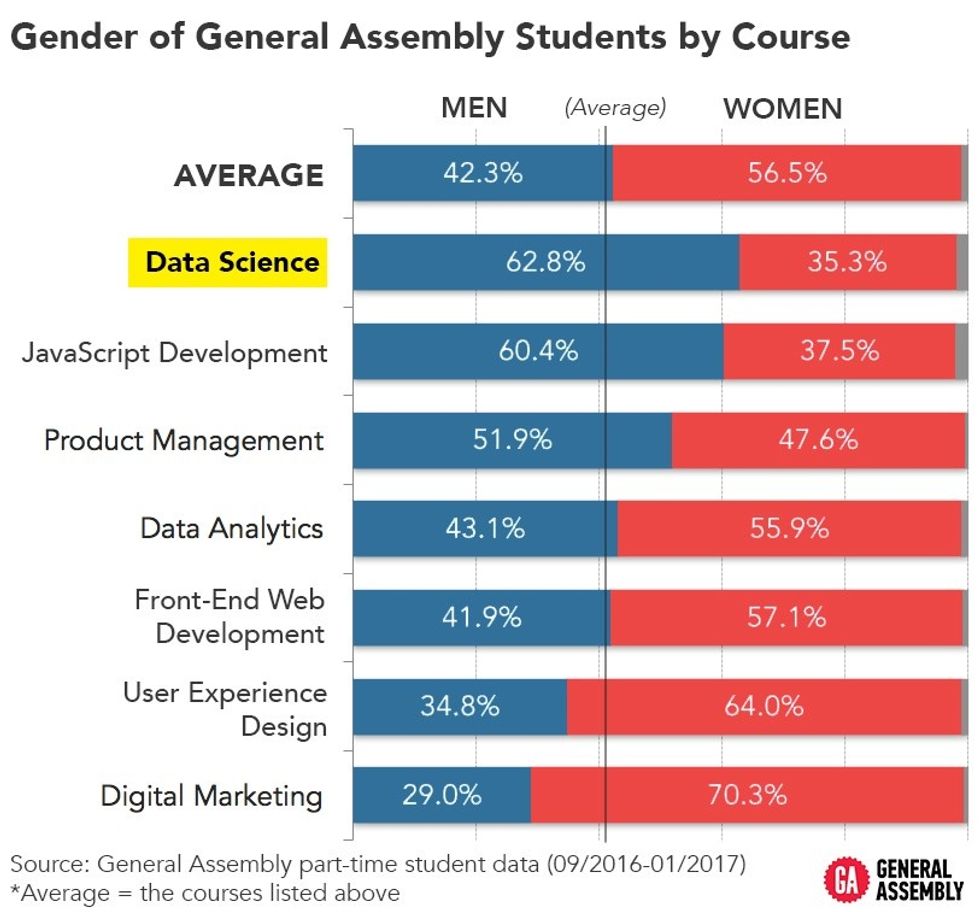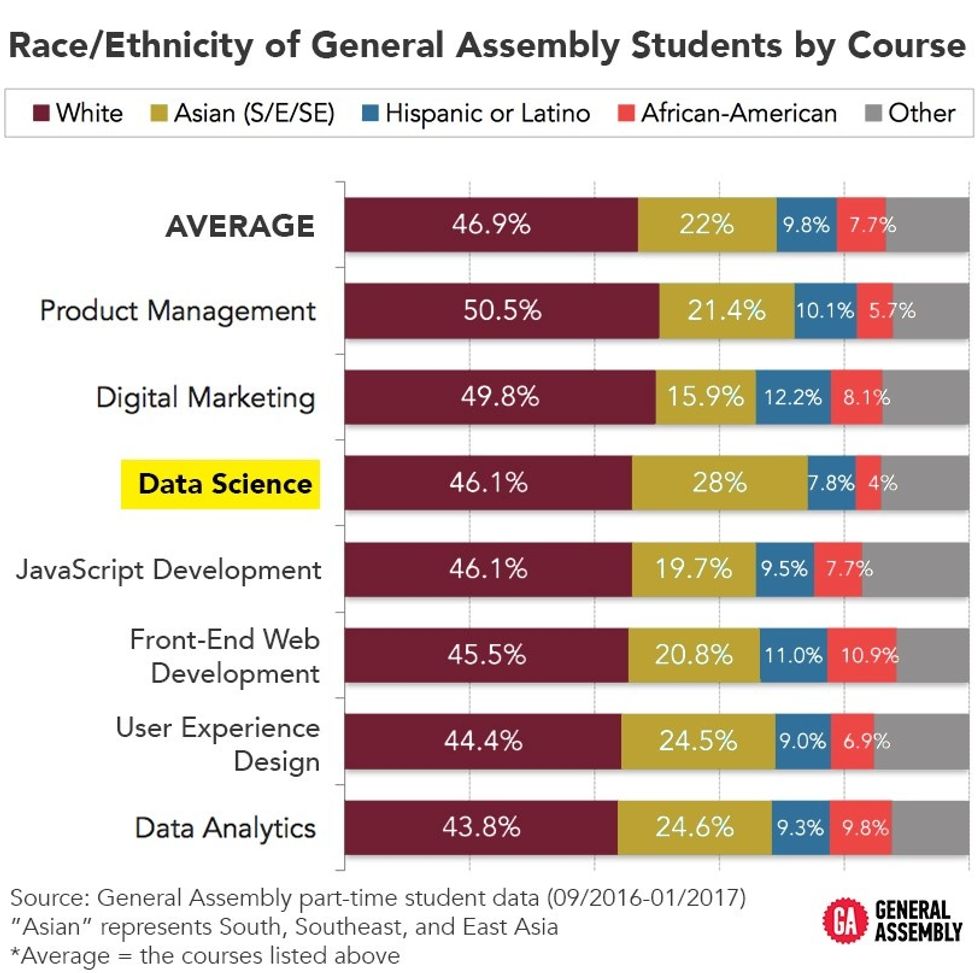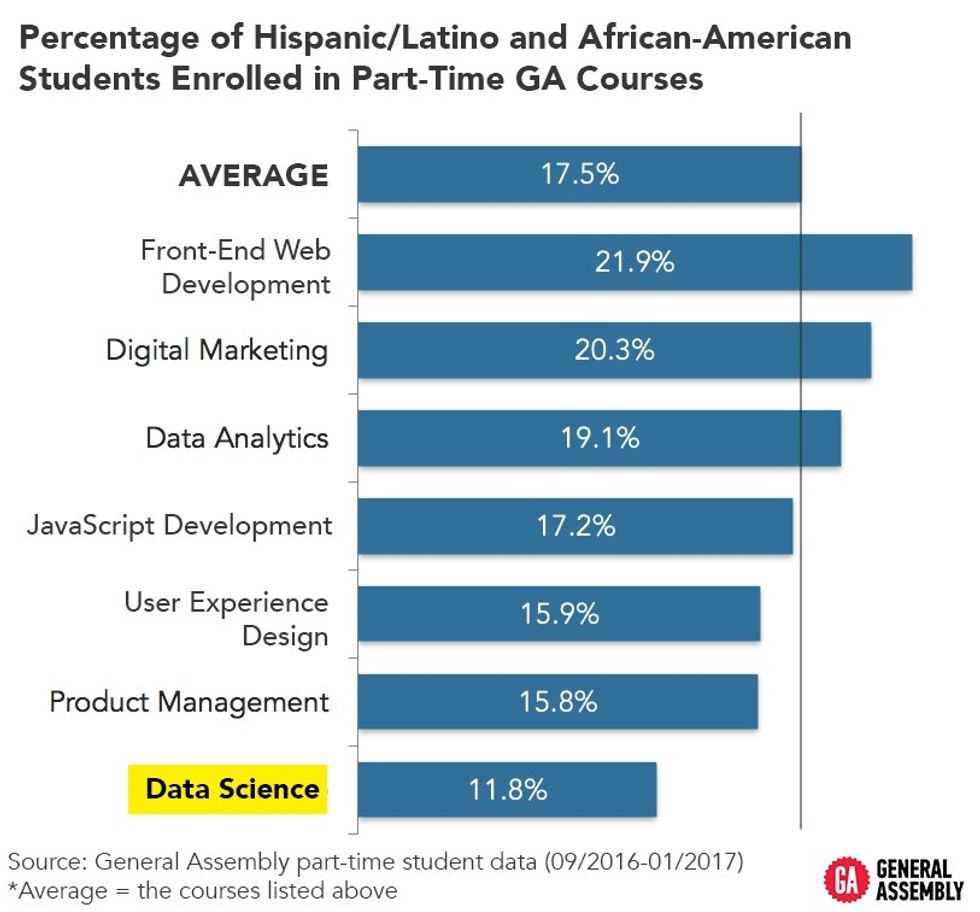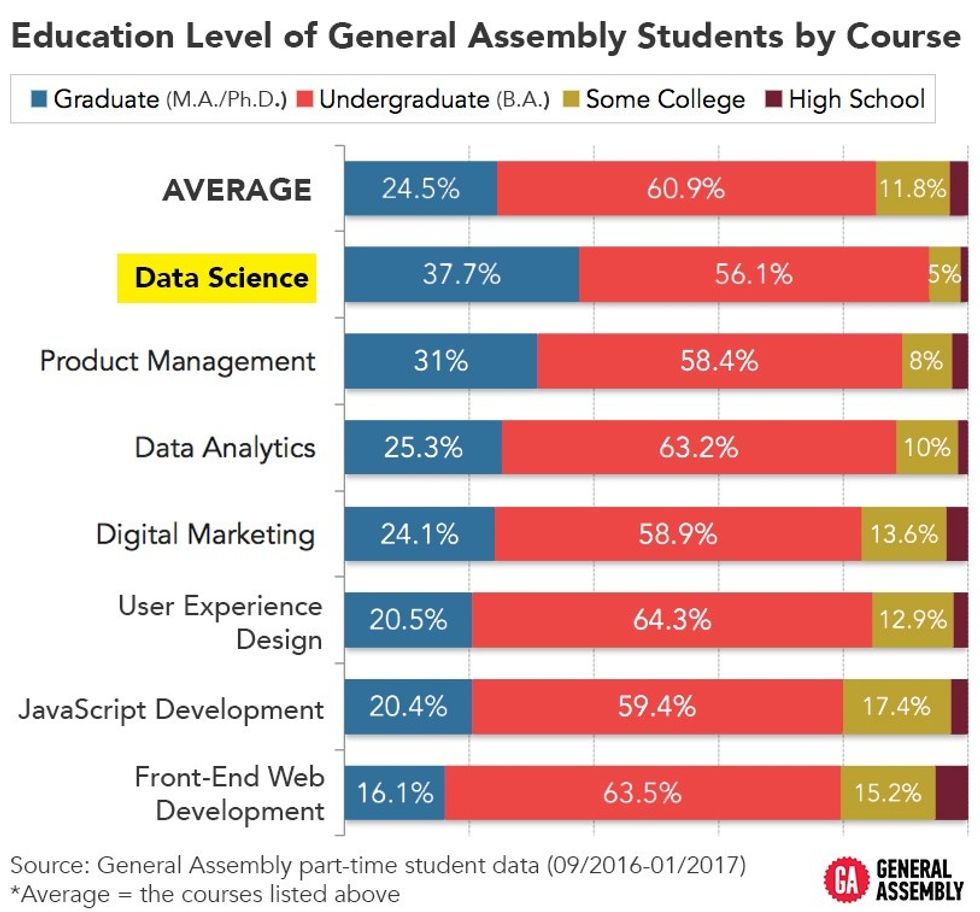Below is an article originally written by PowerToFly Partner General Assembly, and published on September 25, 2017. Go to General Assembly's page on PowerToFly to see their open positions and learn more.
As gender and racial representation improve in other tech disciplines, the study of data science hasn't caught up.
In the past few years, much attention has been drawn to the dearth of women and people of color in tech-related fields. A recent article in Forbes noted, "Women hold only about 26% of data jobs in the United States. There are a few reasons for the gender gap: a lack of STEM education for women early on in life, lack of mentorship for women in data science, and human resources rules and regulations not catching up to gender balance policies, to name a few." Federal civil rights data further demonstrate that "black and Latino high school students are being shortchanged in their access to high-level math and science courses that could prepare them for college" and for careers in fields like data science.
As an education company offering tech-oriented courses at 20 campuses across the world, General Assembly is in a unique position to analyze the current crop of students looking to change the dynamics of the workplace.
Looking at GA data for our part-time programs (which typically reach students who already have jobs and are looking to expand their skill set as they pursue a promotion or a career shift), here's what we found: While great strides have been made in fields like web development and user experience (UX) design, data science — a relatively newer concentration — still has a ways to go in terms of gender and racial equality.
Gender Equality in Data Science
For our analysis, we went through five months' worth (September 2016 through January 2017) of anonymized enrollment data for part-time General Assembly students (those enrolled in 10- to 12-week evening courses). It is important to note that our full-time Immersive course data yielded similar results, but we chose to focus on part-time data because the sample size was bigger.
First, let's take a look specifically at the gender breakdown of students in these courses.
On average, our part-time courses skew more female (56.5%) than male (42.3%).
Some courses, like Product Management and Data Analytics, seem to come close to gender parity. Front-End Web Development falls in right around the average across all courses, and in Digital Marketing and User Experience Design, both more consumer-facing fields, two-thirds or more students are women.
But the Data Science course shows the largest composition of male students — and the lowest of female students, at just 35.3%.
Race and Ethnicity in Data Science
Turning to the same anonymized data set, let's now look at race and ethnicity. Is GA's Data Science course equally lacking in minority participation?
At first glance, it appears that Data Science courses fare pretty well in diversity: The percentage of enrolled students who are white (46.1%) is less than average (46.9%).
But looking specifically at Hispanic/Latino and African-American students, the course has — by far — the lowest total percentage of students.
To put this data in context, the population of the United States is 62% white, 17% Hispanic or Latino, 12% African-American, and 6% Asian/Pacific Islander.
Just 11.8% of part-time Data Science enrollees are Hispanic/Latino or African-American. That's 5.7% below the overall average, and nearly half of the figure in the Front-End Web Development courses.
Education in Data Science
This data set also gives us insight into the highest level of education attained from part-time enrollees across GA courses.
On average, Data Science students come in with the highest degree attainment.
Across all courses, 85.4% of part-time GA students have a bachelor's degree or higher; in Data Science, that figure is 93.8%. This seems to largely be driven by the fact that there are far more master's and Ph.D. graduates in Data Science (37.7%) than the overall average (24.%). A surprisingly high 3.7% of students hold a Ph.D. — more than triple the average of 1.2%.
Data Science seems to draw from a smaller, more specialized pool, which could, in part, perpetuate diversity issues.
Data Science Is Still New
Female and minority students have made positive strides in coding and tech education at GA.
When coding and web development started getting popular two decades ago, the fields were almost entirely dominated by men — most of whom were white. Looking at our data here, though, it's clear things have changed for the better: Front-End Web Development courses are now 57% female and boast the highest percentage of students of color of any course.
At General Assembly, we're proud of the growing diversity of our global community, and we actively seek to create an environment where women, people of color, LGBTQ+ individuals, and other underrepresented communities feel empowered to pursue tech and digital training that they may have previously felt was unwelcoming or inaccessible.
Since data science is still a relatively new field, it is possible things may just take some time to equalize. But we should not be complacent. To help accelerate the process, GA has implemented a number of social impact programs (focusing mainly on our full-time Immersive courses), and engages local and federal governments and well as corporate leaders to move the needle on access and diversity. These programs, which have served hundreds of students over the past two years, have created economic mobility for underserved and overlooked talent.
Some specific examples of that work include a partnership with New York City Mayor Bill de Blasio's Tech Talent Pipeline program, through which GA helped dozens of low-income New Yorkers gain data analytics skills through our part-time programs. We recently launched a similar program through a U.S. Department of Labor grant. The private sector is also starting to step up — BNY Mellon recently invested in General Assembly's Opportunity Fund to train women and people of color to become data scientists.
General Assembly also works with large organizations to increase diversity within their teams. For less than the cost of traditional recruiting agencies, we find high-potential candidates from underrepresented groups, train them in web development, data analytics, or data science, and strategically place them for maximum impact. To ensure that new talent thrives, we offer robust onboarding training that gives both talent and managers the skills and strategies they need for long-term success.
We know these are important early steps, and that we have much work to do to cultivate a more diverse and inclusive data sector.








